Choosing an electric concrete mixer
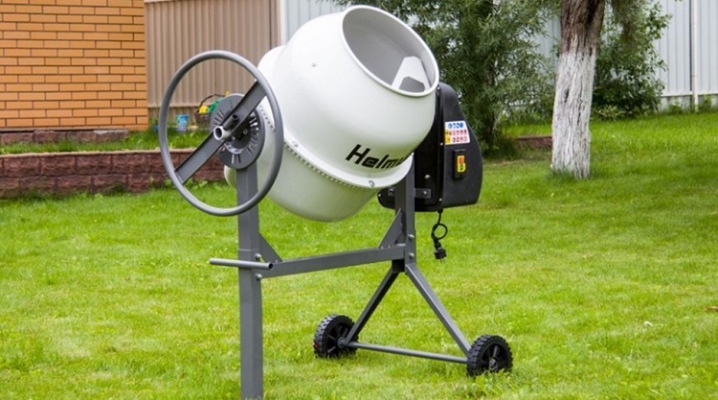
Concrete is a popular construction material. It is used in industry and for private needs. If you need to prepare a solution in large volumes, you should consider purchasing an electric concrete mixer. The variety of options on the market allows you to choose a model for any need.
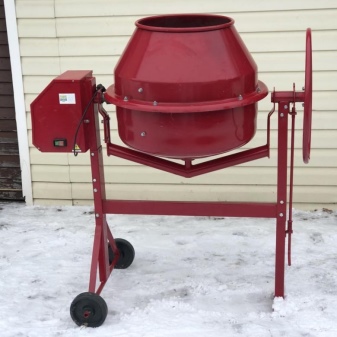
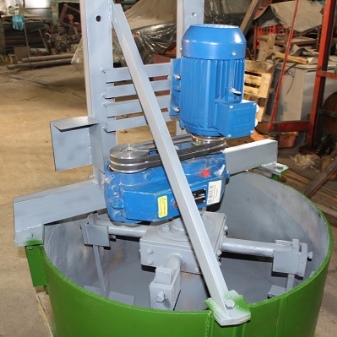
Peculiarities
The electric concrete mixer is used on construction sites. The device has an open container into which all ingredients must be poured. If we are talking about concrete, then it will be cement, sand and water, gravel is also sometimes added. After loading, the machine automatically mixes all the ingredients until the correct consistency is obtained. The prepared solution can be poured into separate containers.
Although the principle of operation of the unit is quite simple, different models differ in performance and price. For the needs of private construction, an industrial concrete mixer with high power is not required, so before buying it is worth studying the features of such devices so as not to overpay.
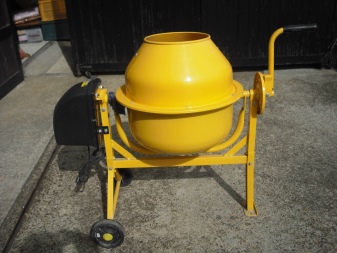

The main characteristics of mortar mixers that matter when choosing a model for a home are:
- the principle of operation of technology;
- power;
- type of drive;
- the capacity of the loading tank;
- type of food.
It will also be useful to pay attention to the material from which the drum is made. It is important that it is durable and resistant to various loads. In addition, some agitators are designed only for a certain type of mixture, this must be taken into account.
The number of revolutions per minute also matters, the mixing speed depends on it and how quickly you can get the finished solution.
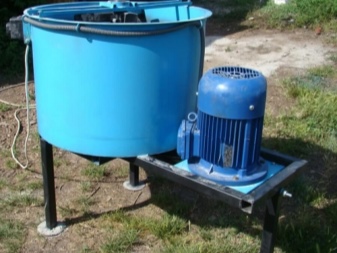
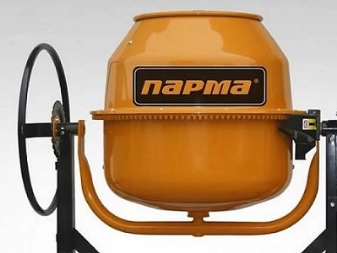
Views
According to the principle of operation, the devices are divided into two groups. Each has its own pros and cons, so it's better to focus on the specifics of the job for which you need a tool.
Forced type
The capacity of such a device remains stationary, only the blades rotate inside, due to which mixing occurs. The mechanism is somewhat reminiscent of a mixer. Compulsory agitators have certain advantages:
- they work 4-5 times faster than others, if speed is important, then you can choose such a model;
- provide high-quality mixing, even if the mixture includes coarse crushed stone;
- suitable for making mortar for floor screed or plaster mix;
- some models provide not only power from the mains, but also have an internal combustion engine, which ensures autonomy in any conditions.
The disadvantage of such units is the higher price compared to other types of mixers. High-quality work is worth it, but it's better to think about whether such an acquisition will pay off and, perhaps, take a closer look at a simpler model.


Gravity type
As the name implies, the solution in such installations is mixed due to the influence of gravity. In these models, the drum rotates during operation, there are also blades inside that pick up the mixture that slides along the walls. Among the advantages of such mixers:
- a simple device that is easy to deal with, no questions arise during operation;
- there are models on wheels that are convenient to move around the site;
- you can use fine and coarse filler to prepare the solution;
- consume less energy than devices with a forced operating principle.
After mixing, a lot of concrete dust is generated, this can be considered a disadvantage. Also, the speed of these cars is not the most impressive. At the same time, they cope with their task and are quite suitable for a small amount of work in a private household.
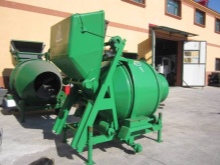
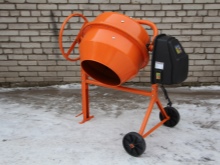
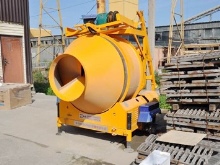
Model overview
Below are popular household mixers of foreign and Russian production. Perhaps one of them will best suit your goals.
Lebedyan (model SBR-132A. 5 95446)
A reliable device with a cast-iron crown, there is a manual drive for overturning the mixture. Works on 220 V, power - 700 W. The volume of the loading container is 132 liters. The model is easy to assemble, has a low weight - 55 kg, it can be moved around the site without any problems. Not designed to work with fillers larger than 40 mm.
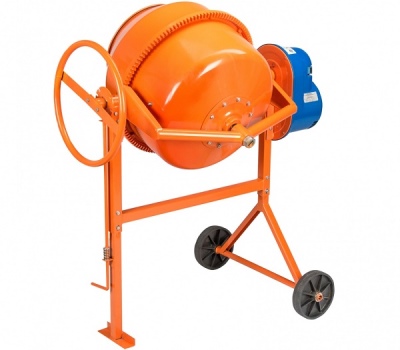
"PROFMASH B-150"
The mixer with a plastic crown can dispense up to 115 liters of ready-to-use solution. It has a power of 600 W and is powered by standard 220 V. The weight of the unit is 52 kg. Suitable for household construction work.
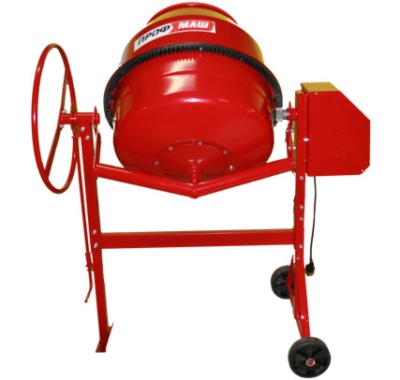
"Vortex BM-63"
Mini model - weighs only 24 kg. Consumes a small amount of electricity at a power of 220 watts. Suitable not only for mixing concrete mortar, but also for preparing compound feed or fertilizers for the soil. Equipped with a metal crown. It can dispense 45 liters of ready-mixed mixture.
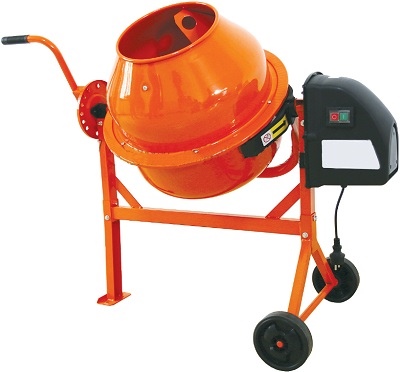
Zitrek (model ZBR 500 380V 024 0711)
A more powerful mixer, operates from a 380 V network, this should be taken into account when connecting. The volume of the loading container is 400 liters, you can get 250 liters of solution. Despite its size, it is mobile due to the built-in wheels. Power - 1500 W, high mixing speed.
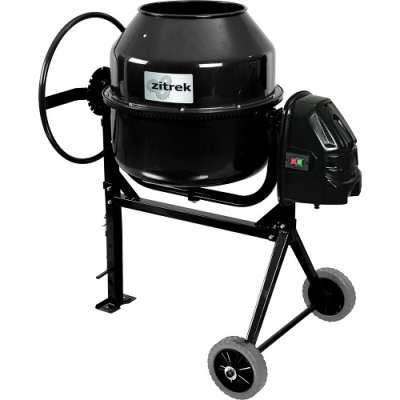
Wester BTM180A
Gravity stirrer with 180 liter pear volume. The set includes wheels for easy transportation. For work, you need a voltage of 220 V. It mixes the solution quite quickly, it is convenient to drain the finished mixture. Power - 800 W.
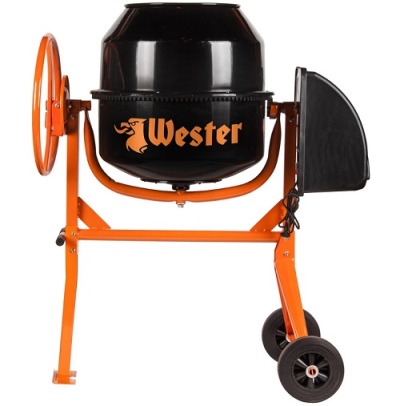
If you need a mixer for wood concrete or foam concrete - these are lightweight varieties of mixtures, then you can pay attention to the following models:
- BSU-500 is equipped with scrapers that count the mass from the walls and allow you to achieve optimal consistency;
- BP-2G-1500S - reliable and durable option;
- Carmix 5,5 XL - Italian-made equipment.
These aggregates maximize mix uniformity, but are not suitable for handling large crushed stone or gravel. Among the miniature options are the Skiper CM-70 with good performance, as well as the REDVERG RD-CM46.
Small agitators are suitable for domestic needs; in a private household, huge aggregates of 500 liters are usually not required.
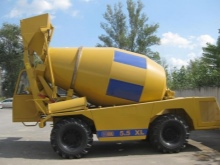
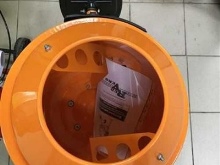
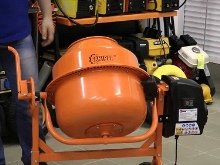
How to choose a concrete mixer?
When buying, it is worth considering certain characteristics. Electric models can be very different, so it is important to pay attention to their performance.
- Pear volume. The parameters of the loading capacity depend on your tasks, 40 liters will be enough for someone, while for others, 100 will not be enough. However, the recommended volume for the home is from 120 to 160 liters, usually enough for domestic needs. When choosing, it should be borne in mind that the amount of the finished mixture will be half as much, since the pear needs to be tilted during operation, so it will not be possible to fill it to the top.
- Engine power. The performance and speed of mixing depends on this indicator. The more powerful the mixer, the more it consumes electricity. Such expenses can be justified in large-scale production, but in everyday life they are useless. You can focus on indicators of 500 W for a pear volume of 130 liters. The larger the capacity, the more powerful the motor will be required to operate, which will increase the overall weight of the device.
- Design features. Bearings, gears and a shaft must also be of high quality and durable, because they are under severe stress. The crown is an important element, it is made of plastic, steel or cast iron. Polymer products quickly deteriorate, but they are inexpensive and easy to change. Cast iron and steel will cost more, but they will last longer.
- Required voltage. Most household mixers with an electronic control unit operate on a 220V network. They can be plugged into an outlet immediately. Some models require 380 V, as a rule, these are more powerful units. In this case, additional training is required to use them.
- Mobility. Models with wheels are more convenient to operate, especially if you have a large enough work area. They can be moved anywhere, unlike stationary mixers.
- Manufacturer. A well-known brand guarantees quality to a certain extent, so it is better to choose brands that have already earned a good reputation in the market. Lebedyan and Vikhr are in demand among Russian manufacturers. Also, many builders praise the Czech Zitrek.
Budget options can be found at the Chinese company Wester.
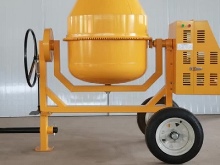

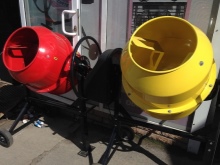
Instructions for use
Even with a simple stirrer, a good mix can be obtained if the order is followed. To make concrete, you will need crushed stone, sand, cement and water. It is important to monitor the quality of all components so that they do not contain impurities. You can calculate the amount of ingredients yourself or using special construction calculators on the Internet.
The loading procedure is quite simple:
- first you need to mix dry sand and cement; for convenience, this can be done in a separate container;
- add water to the resulting mass;
- after that, you can fill in the rubble.
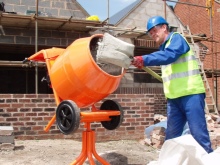
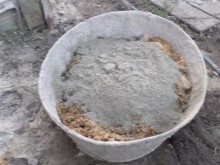

Stirring should be carried out until a homogeneous mass is obtained. Stirring for too long can reduce the ductility of the concrete, so it is important to monitor the condition of the mortar. The concrete mixer must always stand on a flat surface to prevent accidental overturning. It also helps to reduce the stress on the internal mechanisms and the engine. Before work, it is advisable to foresee in advance a place for a container into which the finished solution will be unloaded. Perhaps your model will have certain nuances associated with material loading. In order not to be mistaken, you should carefully study the user manual from the manufacturer. It describes in detail how to work with the concrete mixer correctly.
In addition, you need to periodically clean the drum to prevent the device from breaking. Do not leave the pear with the remains of the mixture, otherwise the solution will harden - it will be difficult to remove it. Do not knock out pieces of concrete with a hammer - this will damage the container. To clean the drum after work, you can fill it with water, add rubble or gravel, start the mixer. Small stones will help remove residual mortar from the walls.
Do not forget to unplug the device from the network when the work is completed. Compliance with the recommendations for use and proper maintenance will extend the life of the concrete mixer.
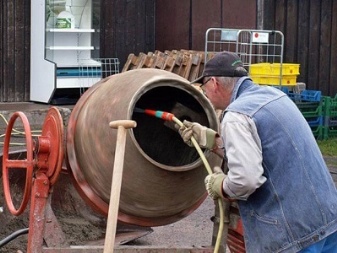
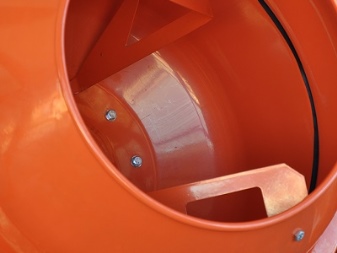













The comment was sent successfully.